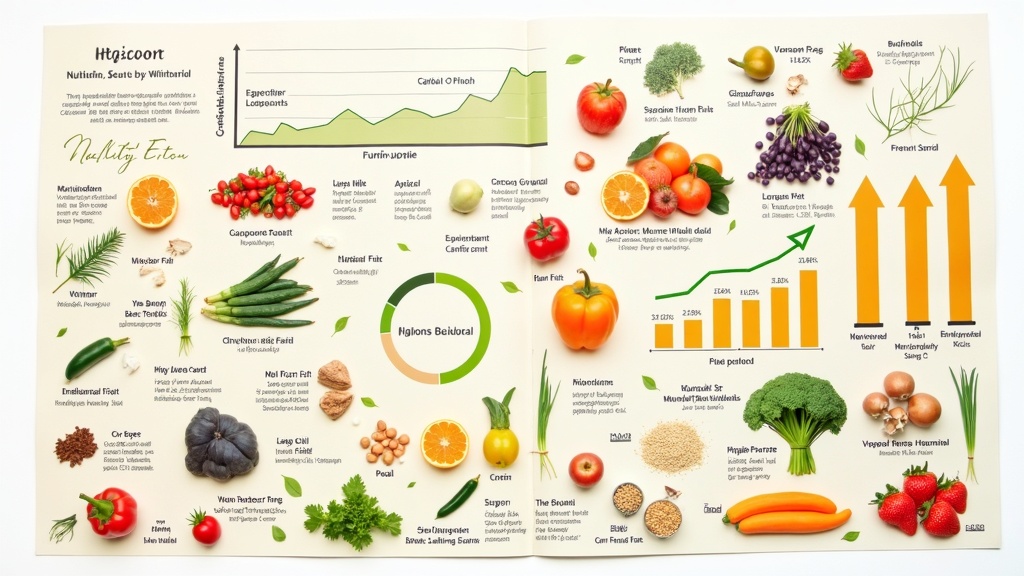Scientific data is really having a big impact on what we’re told to eat.
Nutrition isn’t as simple as it used to be, and new research keeps popping up all the time.
This means dietary guidelines are always changing.
It’s not always easy to keep up, but understanding how scientific findings shape food recommendations helps me make better choices and maybe dodge confusing headlines.

Why Dietary Guidelines Are Always Changing
Following dietary guidelines can feel a bit like trying to hit a moving target.
Every few years, it seems like the advice switches up.
This isn’t just random; it’s mostly because nutrition science is still growing and the quality of the evidence improves over time.
Way back, recommendations were based on fairly basic research and expert opinion.
Now, large studies, clinical trials, and metaanalyses bring in solid data.
For instance, guidelines have switched up on issues like fats, carbohydrates, red meat, and salt, all thanks to newer findings.
These constant changes are less about backtracking and more about responding to evidence as it comes in.
As scientists dig into how nutrition affects our bodies on a cellular level, it becomes clearer why certain foods help or hurt us.
This trickles down into more accurate, up-to-date guidelines that can make a real difference in public health.
How Scientific Data Has Impacted Specific Guidelines
Research has reshaped the big nutrition topics:
- Fat: Once, all fats were lumped together as unhealthy. Now, it’s clear that unsaturated fats (like those in avocados and olive oil) can be good for heart health, while trans fats are better avoided. Saturated fats are still under debate, but the guidelines have eased up a bit based on recent studies.
- Cholesterol: Eggs used to be on the no-go list because of dietary cholesterol. New data show dietary cholesterol doesn’t impact blood cholesterol levels as much for most people, so eggs are back in moderation for many healthy folks.
- Carbohydrates and Sugar: Highcarb, lowfat was popular for decades. But more recent studies suggest the focus should be on carb quality. Whole grains, fruits, and vegetables are encouraged, while sugarsweetened foods and refined grains are discouraged because of links with weight gain and illness.
- Red and Processed Meat: Evidence has linked regular consumption of processed meats to increased risk of certain cancers and heart disease. Guidelines now recommend limiting intake, especially of processed types like sausages and deli meats.
The Role of Large Studies and Metaanalyses
Single studies only tell part of the story.
Sometimes they contradict each other, which can be confusing.
That’s why reviews and metaanalyses—basically a combination of lots of studies—matter so much.
When hundreds of researchers analyze data from many sources, patterns become clearer, and recommendations become more reliable.
For example, years of research linking trans fats to heart disease finally convinced regulators to start phasing them out of foods in countries like the US.
This change happened because data from thousands of people couldn’t be ignored.
It’s a powerful reflection of how bringing together solid data can turn up important patterns, shaping choices that affect millions.
Challenges in Translating Science to Guidelines
Researchers might be on the cutting edge, but turning complicated data into advice that’s easy to follow is tricky.
A few reasons for this include:
- Conflicting Evidence: Studies sometimes reach different conclusions. This can happen due to how the studies are designed, differences in populations, or just the randomness of real life.
- Long-Term Studies: Nutrition studies often take a long time to get meaningful results. People’s diets are hard to track over years, and lots of factors can affect outcomes.
- Industry Influence: Food industry funding can sneak bias into studies. This means government bodies and researchers have to be on alert and transparent about sources of funding.
- Different Populations: A diet that helps one group of people may not work for another group with different habits, genetics, or environments.
There’s also the reality that nutrition is a moving target; as new foods and eating habits come into play, what was once rare can suddenly be everywhere.
All of these factors make forming simple, universal guidelines much more difficult.
How Guidelines Get Made: The Review Process
Nutritional guidelines (like those from the USDA, World Health Organization, or NHS) don’t just appear out of nowhere.
Teams of nutrition scientists look over loads of evidence from all over the world and talk about what the research really means.
They focus on studies with the most reliable methods, prefer randomized trials, and doublecheck findings against effects seen in actual communities.
Agencies also gather input from other experts, doctors, and even food producers to see how recommendations might work in real life.
This process can sometimes take years.
The teams sketch out the benefits and potential risks, figure out what the best available evidence says, and then say it clearly in the guidelines.
This all-in-one approach is designed to give the widest number of people the best odds for good health.
Everyday Examples of Science Shaping Guideline Changes
The story of salt is a good example. For decades, low sodium was a top priority, but recent studies question whether cutting sodium works the same for everyone.
Newer guidelines recommend focusing on foods that are naturally rich in potassium and low in added salt, mainly by eating whole foods instead of packaged ones.
Another example is the advice on dietary fiber.
Lots of recent research shows that a highfiber diet is tied to lower risk of diseases like heart disease, diabetes, and even some cancers.
Because of this, guidelines keep pushing for more fruits, vegetables, whole grains, and beans.
Even simple shifts, like suggesting people drink water instead of sugary drinks or urging folks to swap out white bread for whole wheat, come from scientific trends identified in longterm, wellstructured studies.
These little tweaks can make a big difference over the course of a lifetime.
Questions People Ask About Science and Dietary Guidelines
What are some common reasons guidelines change?
New research or better studies can overturn older knowledge. Sometimes, trends in public health—like rising obesity or diabetes—also prompt a closer look at previous advice.
Can I trust guidelines if they keep changing?
Guidelines aren’t perfect, but each update is based on stronger or newer evidence.
The changes are meant to help people stay healthier by following the best available science.
Are there people who shouldn’t follow standard guidelines?
Some folks have different nutritional needs (like in pregnancy, childhood, or with certain health conditions).
Talking to a healthcare provider or dietitian helps personalize what’s right for you.
Do controversial headlines mean I should stop eating certain foods?
Not really. Headlines often simplify or exaggerate findings from a single study.
Long-term patterns matter most, so major guideline changes usually rely on lots of studies reviewed together.
How to Make Sense of Food and Nutrition Headlines
Nutrition science makes the news a lot, and it’s not always straightforward.
Here’s how I make sense of it without getting too stressed:
- Look for Patterns: Major guideline changes usually rely on a bunch of studies showing the same trend, not just one article.
- Quality Over Hype: Random headlines can make anything sound exciting (or scary). Checking for the source, like well-known medical journals or organizations (Harvard, Mayo Clinic, WHO), helps to spot legit science.
- See the Big Picture: I try to focus on overall eating patterns (like more plants, fewer processed foods) instead of stressing about every small change. Balance and variety are still at the core of good nutrition.
If something sounds too good to be true or like a total disaster, it usually pays to wait until more info rolls in.
Solid dietary recommendations are built on evidence that gets checked and rechecked.
What This Means for Your Diet
Scientific data means dietary guidelines keep getting better, but also a bit more complex.
I try to use these updates to tweak my habits rather than reinvent everything at once.
Swapping out processed foods for more whole foods, trying to eat more fiber, and not sweating over one meal or ingredient works best for me.
- Emphasize variety and moderation: No need to cut out entire food groups unless recommended by a health professional.
- Stay updated: Every few years, scanning the latest advice from trusted health organizations can help keep habits on track.
- Talk to trusted experts: Registered dietitians, your doctor, or credible public health resources can break down what new science really means for you personally.
The best approach usually comes down to picking up good habits slowly, staying flexible, and remembering that food is more than just nutrients—it’s also about community, tradition, and pleasure.
Wrapping Up
Dietary guidelines switch up because science is always working to provide clearer, better information.
Sometimes this means changing advice, but it also means people are getting recommendations that aim to improve health, quality of life, and happiness over the long run.
Paying attention to these changes, with common sense and a healthy dose of patience, helps me keep things in perspective.
If you find all this overwhelming, just remember that the basics rarely change: more plants, fewer sweets, simple meals made from real food, and a routine that fits with your lifestyle.
Keeping things simple and practical goes a long way, no matter how much the headlines mix it up.
